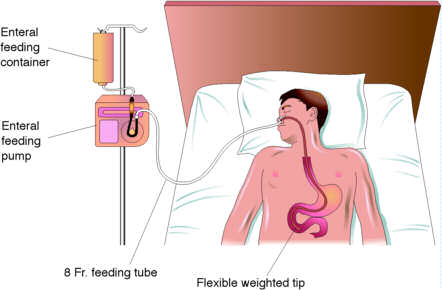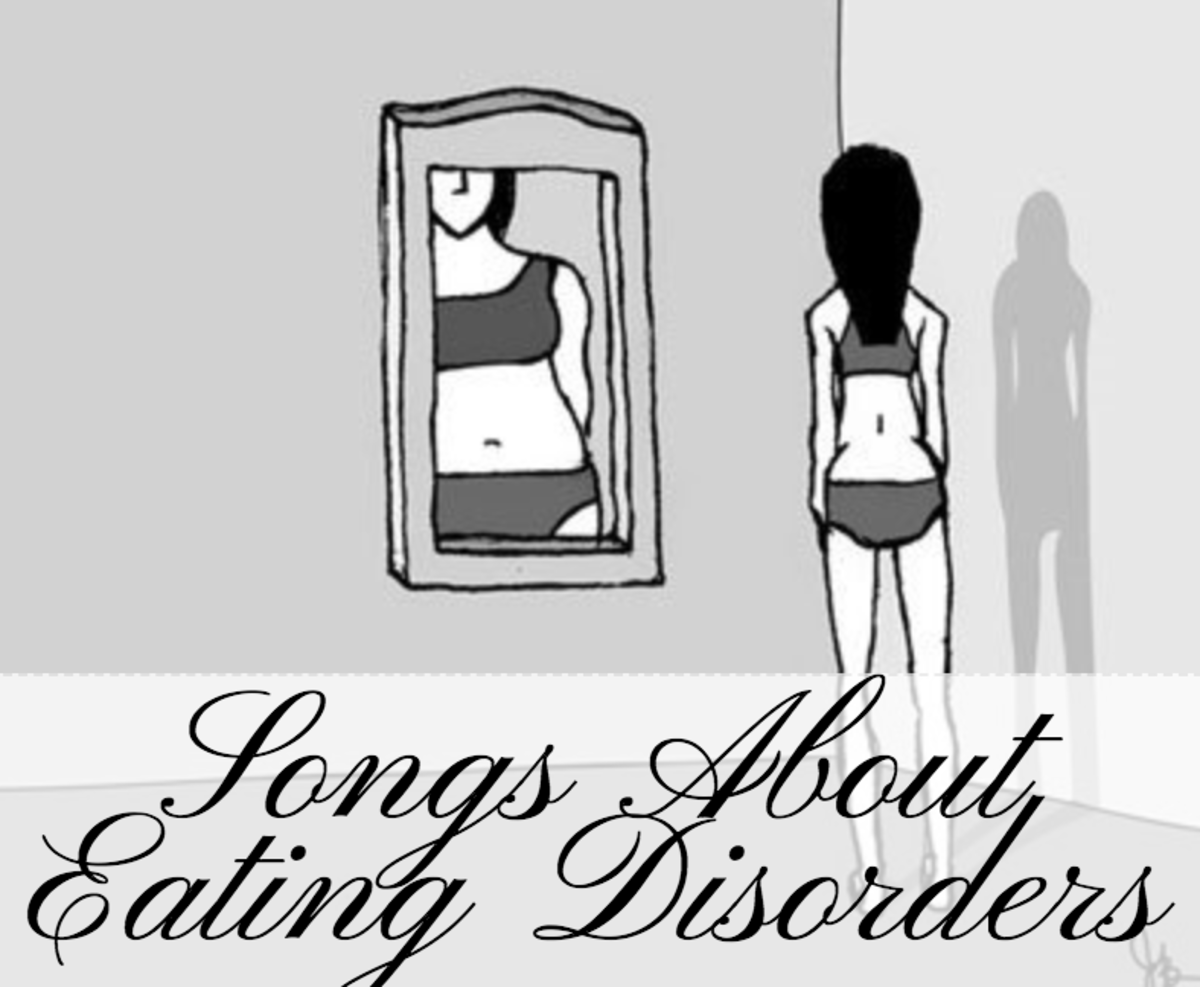Eating Disorder Treatment & Recovery

Because the causes of eating disorders are so various and so intertwined, successful treatment is always multi-disciplinary. Nutrition, behavior modification, and the learning of coping skills are all important pieces to the puzzle, but without resolving the core issues that triggered the individual to resort to such unhealthy practices, the rest is all for naught. Do not underestimate an eating disorder. Like an addiction, it grips like a vise, and, like an addiction, is rarely (if ever) cured without intense and ongoing treatment.
Refeeding
In severe cases of malnutrition, hospitalization may be necessary to stabilize vital signs while the initial re-feeding takes place, sometimes via a tube, inserted nasally into the stomach (see figure below). The prescription of anti-depressants to lift mood and stimulate appetite is common. Malnutrition and electrolyte imbalance lead to severe physical side effects: loss of hair, dry skin, low blood pressure, and abnormal heart rate are all common, as well as early osteoporosis from amenorrhea, and sometimes infertility. In an attempt to keep itself warm without its protective layer of fat, the body grows a fine coat of fur called lanugo, and the digestive system shuts down, unaccustomed to processing a proper amount of food.

Find Help
Rehabilitation
Psychotherapy and nutrition counseling are the first steps to recovery, but anorexics often require a more serious intervention at some point, as relapses are frequent. Intensive inpatient rehabilitation has the highest recovery rate, as the patient's every move can be studied and monitored, and psychotherapy can take place simultaneously to weight gain. Without treatment, 1 in 4 anorexics will die of his or her disease. With this said, 70% of women with eating disorders are at or above a healthy weight, and these, too are in danger-heart attack, renal failure, esophageal rupture from vomiting, and gastric rupture from overeating all cause the death of healthy-looking people every day.
Clinical studies have shown that even healthy adult males, when kept on a starvation diet, will begin to exhibit classic anorexic behaviors: food hoarding and rituals, chronic gum-chewing and chain-smoking, obsession over recipes, calories, and fat. However, simply getting an eating disordered individual to "eat normally" does not solve the problem. Eating disorders are distressing mental illnesses that arise in an attempt to deal with one's unmet needs. In the end, finding other ways to meet these needs is the only way to replace the unhealthy behaviors with healthy ones; it is often a lifelong journey to wellness.









